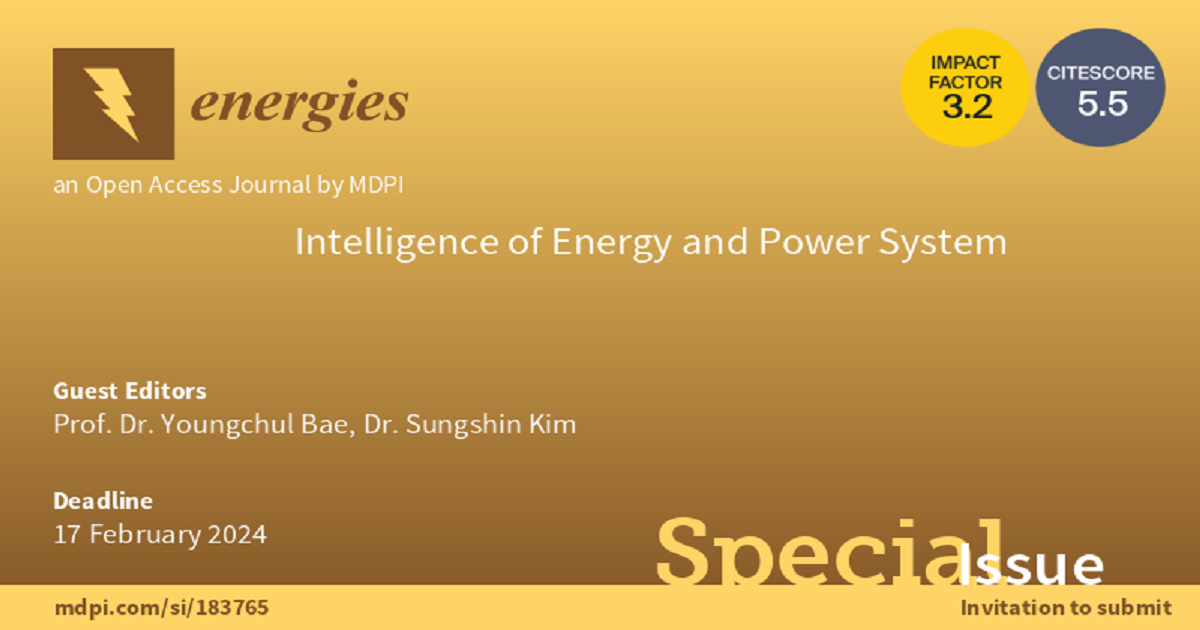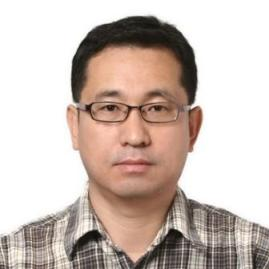Intelligence of Energy and Power System
A special issue of Energies (ISSN 1996-1073). This special issue belongs to the section "F: Electrical Engineering".
Deadline for manuscript submissions: closed (17 February 2024) | Viewed by 631

Special Issue Editors
Interests: intelligent system; deep learning; chaotic dynamics; nonlinear control; energy prediction; fuzzy and neural network; robot control; digital twins and CPS (cyber–physical system)
Special Issues, Collections and Topics in MDPI journals
Interests: intelligent system; fault diagnosis and prediction; solar energy; energy storage systems; deep learning
Special Issues, Collections and Topics in MDPI journals
Special Issue Information
Dear Colleagues,
We cordially invite you to contribute a paper to this Special Issue of the open access journal Energies, entitled “Intelligence of Energy and Power System”. This issue aims to present recent developments in energy and power systems related to academia, research, and industries, among other platforms.
This Special Issue contains intelligence of energy and power system and their related theme or application. I invite you to submit your research on these topics, in the form of original research papers and articles.
The topics of interest for this Special Issue include, but are not limited to, the following:
- Intelligence in energy system, energy storage, energy source, energy conversion and energy environment;
- Intelligence in power system;
- Applications;
- Other related
Prof. Dr. Youngchul Bae
Dr. Sungshin Kim
Guest Editors
Manuscript Submission Information
Manuscripts should be submitted online at www.mdpi.com by registering and logging in to this website. Once you are registered, click here to go to the submission form. Manuscripts can be submitted until the deadline. All submissions that pass pre-check are peer-reviewed. Accepted papers will be published continuously in the journal (as soon as accepted) and will be listed together on the special issue website. Research articles, review articles as well as short communications are invited. For planned papers, a title and short abstract (about 100 words) can be sent to the Editorial Office for announcement on this website.
Submitted manuscripts should not have been published previously, nor be under consideration for publication elsewhere (except conference proceedings papers). All manuscripts are thoroughly refereed through a single-blind peer-review process. A guide for authors and other relevant information for submission of manuscripts is available on the Instructions for Authors page. Energies is an international peer-reviewed open access semimonthly journal published by MDPI.
Please visit the Instructions for Authors page before submitting a manuscript. The Article Processing Charge (APC) for publication in this open access journal is 2600 CHF (Swiss Francs). Submitted papers should be well formatted and use good English. Authors may use MDPI's English editing service prior to publication or during author revisions.
Keywords
- intelligence in energy system, energy storage, energy source, energy conversion and energy environment
- intelligence in power system
- applications
- other related themes






